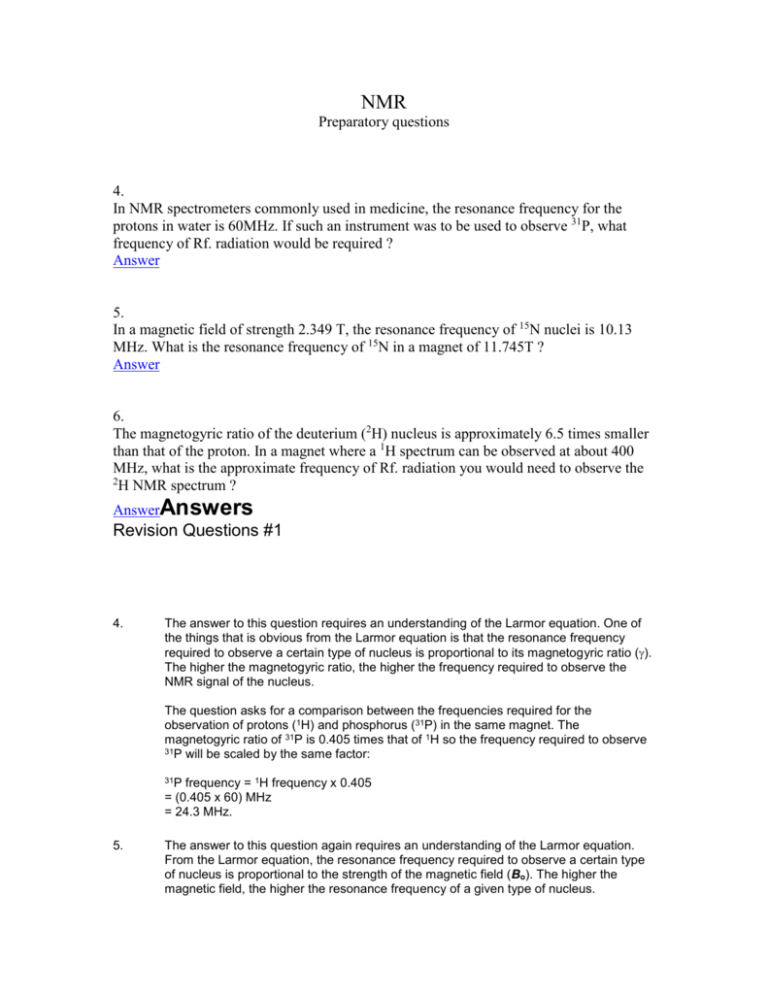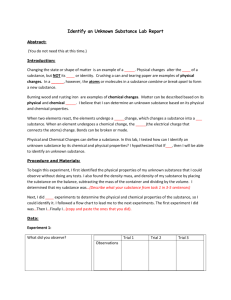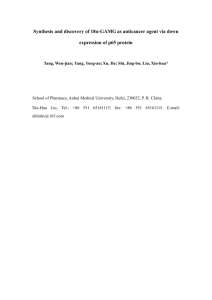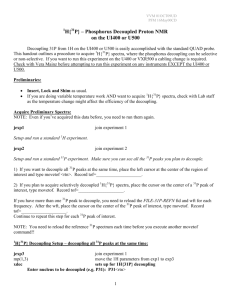nmr-questions
advertisement

NMR Preparatory questions 4. In NMR spectrometers commonly used in medicine, the resonance frequency for the protons in water is 60MHz. If such an instrument was to be used to observe 31P, what frequency of Rf. radiation would be required ? Answer 5. In a magnetic field of strength 2.349 T, the resonance frequency of 15N nuclei is 10.13 MHz. What is the resonance frequency of 15N in a magnet of 11.745T ? Answer 6. The magnetogyric ratio of the deuterium (2H) nucleus is approximately 6.5 times smaller than that of the proton. In a magnet where a 1H spectrum can be observed at about 400 MHz, what is the approximate frequency of Rf. radiation you would need to observe the 2 H NMR spectrum ? AnswerAnswers Revision Questions #1 4. The answer to this question requires an understanding of the Larmor equation. One of the things that is obvious from the Larmor equation is that the resonance frequency required to observe a certain type of nucleus is proportional to its magnetogyric ratio (). The higher the magnetogyric ratio, the higher the frequency required to observe the NMR signal of the nucleus. The question asks for a comparison between the frequencies required for the observation of protons (1H) and phosphorus (31P) in the same magnet. The magnetogyric ratio of 31P is 0.405 times that of 1H so the frequency required to observe 31P will be scaled by the same factor: 31P frequency = 1H frequency x 0.405 = (0.405 x 60) MHz = 24.3 MHz. 5. The answer to this question again requires an understanding of the Larmor equation. From the Larmor equation, the resonance frequency required to observe a certain type of nucleus is proportional to the strength of the magnetic field (Bo). The higher the magnetic field, the higher the resonance frequency of a given type of nucleus. The question asks for a comparison between the frequencies required for the observation of 15N in two different magnets. The magnetic field strength is increased by a factor of (11.745/2.349) = 5 so the frequency required to observe 15N will be scaled by this factor: 15N frequency at 11.745T = 15N frequency at 2.349T x 5 = (10.13 x 5) MHz = 50.65 MHz. 6. The answer to this question is very similar to the answer to Question 4. The question asks for a comparison between the frequencies required for the observation of protons (1H) and deuterium (2H) in the same magnet. The magnetogyric ratio of 1H is 6.5 times that of 2H, so the frequency required to observe 2H will be 1/6.5 that required to observe 1H. 2H frequency = 1H frequency / 6.5 = (400 / 6.6) MHz = 61.54 MHz.








